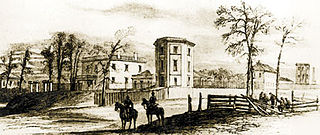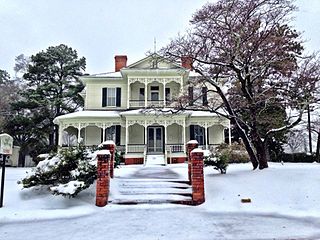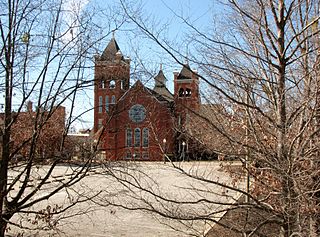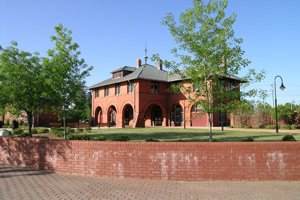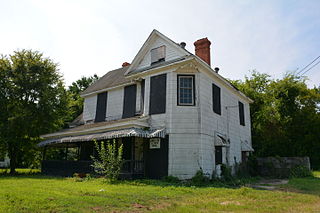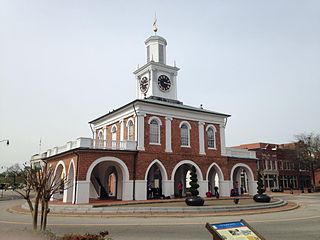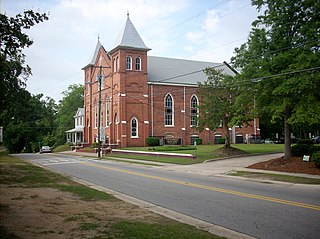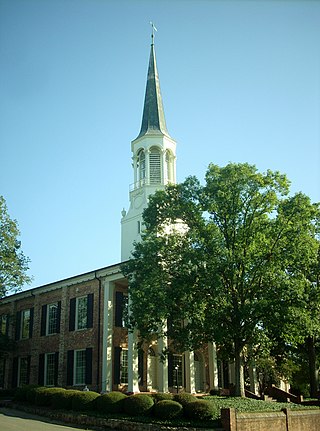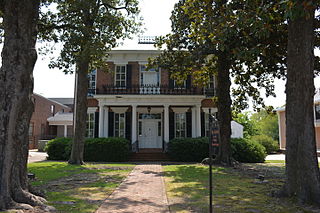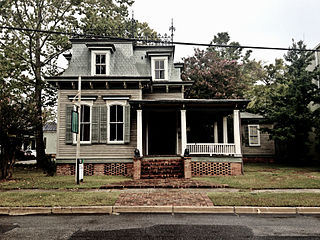Self-guided Sightseeing Tour #1 in Fayetteville, United States
Legend
Tour Facts
5.9 km
114 m
Experience Fayetteville in United States in a whole new way with our free self-guided sightseeing tour. This site not only offers you practical information and insider tips, but also a rich variety of activities and sights you shouldn't miss. Whether you love art and culture, want to explore historical sites or simply want to experience the vibrant atmosphere of a lively city - you'll find everything you need for your personal adventure here.
Individual Sights in FayettevilleSight 1: Arsenal Park
The Fayetteville Arsenal in Fayetteville, North Carolina was built in 1838 because during the War of 1812 the United States government realized that the existing distribution of weapons and ammunition factories was not adequate for the defense of the country. A program was begun to provide more Federal arsenals which would be distributed so that no area of the country would be too far away from an arms depot. Bladen County Representative James McKay introduced House Resolution #374 for inclusion of an arsenal at Fayetteville.
Sight 2: Edgar Allen Poe's House
The 1897 Poe House' is a historic home located at Fayetteville, Cumberland County, North Carolina.
Wikipedia: Edgar Allan Poe House (Fayetteville, North Carolina) (EN), Website
Sight 3: Museum of the Cape Fear Historical Complex
The Museum of the Cape Fear Historical Complex is a museum about the history and cultural heritage of southern North Carolina. Opened in 1988 and located in Fayetteville, the museum is a regional branch of the North Carolina Museum of History in Raleigh. The complex includes the main history museum, the 1897 Poe House, and Arsenal Park.
Sight 4: Airborne and Special Operations Museum
The United States Army Airborne & Special Operations Museum (ASOM) is part of the U.S. Army Museum Enterprise dedicated to preserving and teaching a public history of the Special Operations and Airborne community, as well as broader United States military history. Located on Fort Liberty, but geographically separate from the main installation, it has been open to the public in nearby downtown Fayetteville, North Carolina since 2000. The facility is staffed primarily by civilians and volunteers on a day to day basis, but remains owned and administered by the Army through the U.S. Army Center of Military History, a part of Training and Doctrine Command (TRADOC).
Wikipedia: Airborne & Special Operations Museum (EN), Website
Sight 5: Hay Street United Methodist Church
Hay Street United Methodist Church is a historic Methodist church located in Fayetteville, Cumberland County, North Carolina. It was the first Methodist church constructed in the city.
Sight 6: First Baptist Church
First Baptist Church is a historic Baptist church located at 200 Old Street in Fayetteville, Cumberland County, North Carolina. It was built between 1906 and 1910, and is a Romanesque Revival style brick church. It has a gable front flanked by towers of unequal size.
Wikipedia: First Baptist Church (Fayetteville, North Carolina) (EN)
Sight 7: Fayetteville Area Transportation & Local History Museum
Cape Fear and Yadkin Valley Railway Passenger Depot is a historic train station located at 325 Franklin Street in Fayetteville, North Carolina. It was built in 1890 by the Cape Fear and Yadkin Valley Railway. It is a two-story brick passenger depot with a deep hip roof in the Romanesque Revival style. The seven bay by two bay building features a rounded brick arch arcade. It was listed on the National Register of Historic Places in 1983.
Wikipedia: Fayetteville station (Cape Fear and Yadkin Valley Railway) (EN)
Sight 8: Dr. Ezekiel Ezra Smith House
The Dr. Ezekiel Ezra Smith House is a historic house at 135 South Blount Street in Fayetteville, North Carolina. It is a 2+1⁄2-story wood-frame structure, with complex massing typical of the Queen Anne architectural style. Its main block has a side-gable roof, with a projecting bay section at the right of the front facade that is topped by a gable. A hip roof porch extends from the center of the projecting bay around to the left side. The house was built in 1902, and is unusual as a Queen Anne house in one of the city's historical African-American neighborhoods. Dr. Ezekiel Ezra Smith, for whom the house was built, was instrumental in the development of North Carolina's first State Colored Normal School, established in Fayetteville in 1877.
Sight 9: Market House
The Market House is a Market house and town hall in the center of Fayetteville, Cumberland County, North Carolina. It was built in 1838 on the site of the old state house and Town Hall which burned down in 1831. Fayetteville was the capital of North Carolina from 1789 to 1794.
Sight 10: Cool Spring Place
Cool Spring Place, also known as Cool Spring Tavern, is a historic home located at Fayetteville, Cumberland County, North Carolina. It was built in 1788, and is a two-story, five bay by four bay, rectangular Federal style frame dwelling. It low hipped roof and features a double porch on the front facade. It operated as a tavern until 1795, and is believed to be the oldest existing structure in the city of Fayetteville, having survived the disastrous fire of 1831.
Sight 11: Evans Metropolitan AME Zion Church
Evans Metropolitan AME Zion Church is a historic African Methodist Episcopal church located at 301 N. Cool Spring Street in Fayetteville, Cumberland County, North Carolina. It was built in 1893–1894, and is a five bay, rectangular brick building in the Gothic Revival style. The front facade features flanking towers. Also on the property is a contributing house built in 1913 used as an office/administration building. It is a two-story frame house with a hipped roof and wraparound porch.
Sight 12: First Presbyterian Church
First Presbyterian Church is a historic Presbyterian church located at Ann and Bow Streets in Fayetteville, Cumberland County, North Carolina. It was built in 1832, incorporating parts of the brick walls of an earlier (1816) church that burned in 1831. It is a two-story gabled brick building, five bays wide and five wider bays deep. The chancel, portico, steeple and most of the interior woodwork are later additions and replacements. The hexastyle portico and steeple were designed by Hobart Upjohn in 1922.
Wikipedia: First Presbyterian Church (Fayetteville, North Carolina) (EN)
Sight 13: Kyle House
Kyle House is a historic home located at Fayetteville, Cumberland County, North Carolina.
Sight 14: Mansard Roof House
Mansard Roof House is a historic home located at Fayetteville, Cumberland County, North Carolina. It was built in 1883, and is a 1+1⁄2-story, three bay by six bay, Second Empire style frame dwelling. It has a side-hall plan and rear wing. It features a mansard roof covered with diaper-patterned pressed metal and wraparound porch.
Share
How likely are you to recommend us?
Disclaimer Please be aware of your surroundings and do not enter private property. We are not liable for any damages that occur during the tours.
GPX-Download For navigation apps and GPS devices you can download the tour as a GPX file.
